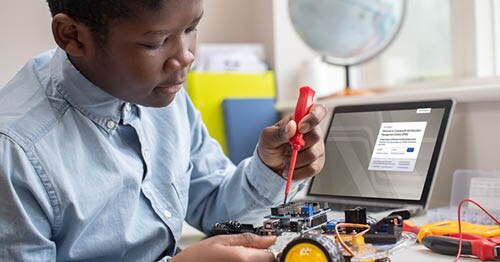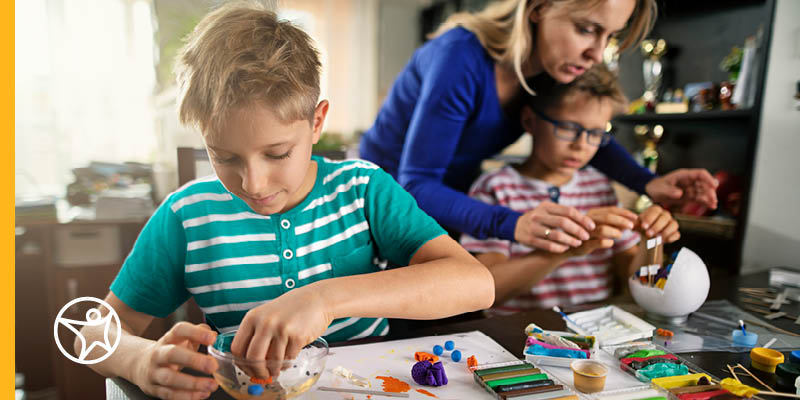What You Should Know About Online AP® Classes
by Julie Hersum
byKristina Cappetta
4 min to readEmbracing curiosity is important for people of all ages, and scientific thinking for kids through engaging in STEM activities can encourage them to be curious and ask important questions. But how can parents and Learning Coaches encourage it?
We’re going to get curious about curiosity and look at how STEM can help and ways you can inspire curiosity in your student with STEM ideas for kids.
STEM is an acronym that stands for Science, Technology, Education, and Mathematics. It teaches concepts and focuses on solving problems using critical thinking and analytical skills.
Since STEM involves scientific reasoning for kids, it encourages them to ask questions to get the answers they need to solve problems. If kids don’t ask why or how, they’ll may never truly understand the concepts they’re trying to grasp.
A STEM-focused mindset gets kids excited about science and inspires their imagination. It also encourages life skills like listening, team building, and creative problem-solving. Without curiosity in science and other areas of life, things would get boring! The art of questioning is what keeps things evolving.
Many education experts call curiosity the key to learning. One University of California study showed a connection between curiosity, pleasure, and learning. Participants were connected to an MRI machine and asked questions to rate their curiosity about different subjects. When they were asked a question that piqued their curiosity, there was activity in the same part of the brain that reacts to a reward.
The participant’s curiosity also triggered the hippocampus, which is the part of the brain that is involved in creating memories. At the end of the experiment, participants remembered the right answers to the questions that piqued their curiosity. Research has also shown that curiosity can be just as important as intelligence when determining how well students perform in school. Curiosity is a force that can drive critical thinking and reasoning, serving as a catalyst for learning.
While some children may be naturally curious, others need a little encouragement. Here are some simple ways to inspire curiosity in students:
Two simple words, “What if?” can spark a child’s curiosity. When you ask, “What if?” The sky’s the limit. As your child becomes more comfortable asking this question, you can also encourage them to think in questions. How, why, what…? These are all questions that can trigger curiosity and inspire your child to continue to ask questions and search for the answers. This is how some of the greatest inventions were created. Someone asked why and then made it happen.
By using things that interest your child as a starting point, you can lead them to become more curious about the world around them. If your child likes video games, ask them how they think that game got onto their screen. This can open a whole conversation about coding and programming, and lead to fun STEM ideas for kids. From there, your child may ask to take STEM classes that teach coding skills. When a child is interested in a subject, they’re more apt to continue on the path and want to know more about it.
Some children may be hesitant to be curious because being curious can lead to risk and failure. If your student tries an idea and it doesn’t work, they may feel as though they failed. In reality, they can learn some important lessons when things don’t work out the first time.
By taking the fear out of failure and showing your student that remarkable things can develop, they can become inspired to take risks and be curious.

If your student has a natural interest in taking things apart and playing with them or just exploring objects during a nature walk, give them the time to tinker. A curiosity in science can develop from testing out a new technology or just playing around in their environment. Tinkering can be the first step in stimulating the brain to solve problems.
Project-based learning allows students to actively engage in real-world projects. It fosters their creativity and makes ideas come alive. Here on the Connections Academy Resource Hub, we feature several STEM ideas for kids that can encourage project-based learning and curiosity. Activities like building lava lamps, designing robots, and even making musical water glasses, can encourage scientific thinking for kids and make them want to become more curious about the world around them.
As a Learning Coach, you can spark curiosity through STEM projects and in everyday objects around you. By being curious yourself, you can inspire your student to explore, ask questions, and realize that if you dream it, you can make it happen.
by Julie Hersum
by Trey Edgington
by Charlotte Davies
